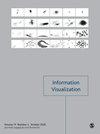有效分析情感可视化中使用的视觉隐喻的探索系统
IF 1.8
4区 计算机科学
Q3 COMPUTER SCIENCE, SOFTWARE ENGINEERING
引用次数: 0
摘要
在数据可视化领域,最近出现了一种趋势,即在总结情感分析结果时,使用具有多维结构的复杂可视化类型或并行使用多个可视化类型。虽然这种趋势可能对复杂的情感分析有用,但对于普通大众和新手研究人员来说,这种分析却很困难。为了解决这个问题,最近出现了一种使用视觉隐喻将情感可视化的趋势。为了便于理解相关案例,有必要系统地掌握情感目标、研究目的和动机以及替代视觉隐喻的表征方法。因此,本研究的目标是开发一个能够分析情感可视化案例中使用的视觉隐喻的探索系统。在本研究中,(1)收集了使用视觉隐喻的情感可视化案例。(2) 在构建了由 "目标、中介、表征、视觉变量和可视化技术 "等类别组成的分类法后,利用该分类法对情感可视化案例中出现的视觉隐喻句子进行分析。(3)开发了能够把握分类法五大类子元素语义关系、直观解读视觉隐喻的探索系统,以便向情感可视化研究人员推荐合适的案例。(4) 利用用户场景解释了探索系统的方法和实用性。(5) 进行了一项案例研究,以表明所提供的系统可从不同角度进行分析。(6) 通过针对专家的验证,证明了探索系统的可用性。所提出的系统可以让研究人员和分析人员直观地掌握 "应该配备哪些类型的可视化隐喻方法和理念,以更易于理解的方式将情感数据可视化"。本文章由计算机程序翻译,如有差异,请以英文原文为准。
An exploration system to effectively analyze the visual metaphor used in sentiment visualization
In the field of data visualization, there has been a recent trend of using a complex type of visualization with a multidimensional structure or using several visualizations in parallel when summarizing the results of sentiment analysis. Although this trend may be useful for sophisticated sentiment analysis, such analysis is difficult for the general public and novice researchers. To address this issue, there has recently been a trend of visualizing sentiments using visual metaphors. To facilitate the understanding of related cases, it is necessary to have a systematic means of grasping the sentiment target, the purpose and motivation of research, and the representations used as substitutes for visual metaphors. Therefore, the objective of the present study was to develop an exploration system that can analyze the visual metaphors used in the case of sentiment visualization. For this study, (1) sentiment visualization cases in which visual metaphors are used were collected. (2) After a taxonomy composed of the categories of “target, intermediation, representation, visual variable, and visualization technique” was constructed, it was used to analyze sentences of visual metaphors appearing in sentiment visualization cases. (3) An exploration system capable of grasping the semantic relationships of sub-elements within the five categories of the taxonomy and intuitively interpreting visual metaphors was developed so that appropriate cases can be recommended to sentiment visualization researchers. (4) The approach and usefulness of the exploration system were explained using user scenarios. (5) A case study was conducted to show that the provided system can be analyzed from various perspectives. (6) The usability of the exploration system was demonstrated through a verification targeting experts. The proposed system allows researchers and analysts to intuitively grasp “what types of visual metaphor method and idea should be equipped to visualize sentiment data in an easier way to understand.”
求助全文
通过发布文献求助,成功后即可免费获取论文全文。
去求助
来源期刊

Information Visualization
COMPUTER SCIENCE, SOFTWARE ENGINEERING-
CiteScore
5.40
自引率
0.00%
发文量
16
审稿时长
>12 weeks
期刊介绍:
Information Visualization is essential reading for researchers and practitioners of information visualization and is of interest to computer scientists and data analysts working on related specialisms. This journal is an international, peer-reviewed journal publishing articles on fundamental research and applications of information visualization. The journal acts as a dedicated forum for the theories, methodologies, techniques and evaluations of information visualization and its applications.
The journal is a core vehicle for developing a generic research agenda for the field by identifying and developing the unique and significant aspects of information visualization. Emphasis is placed on interdisciplinary material and on the close connection between theory and practice.
This journal is a member of the Committee on Publication Ethics (COPE).
 求助内容:
求助内容: 应助结果提醒方式:
应助结果提醒方式:


